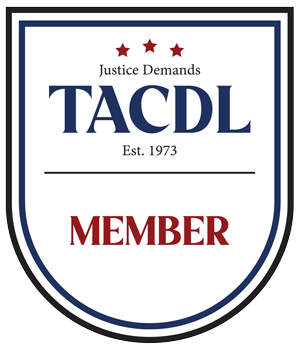Motorcycle accidents often lead to severe injuries for riders and passengers due to the limited protection that motorcycles provide compared to other types of vehicles. Proving who is at fault, or proving negligence, becomes crucial for anyone involved in a motorcycle accident seeking compensation for injuries and damages. In a legal sense, proving negligence means showing that the other party acted carelessly or irresponsibly, causing harm. This process requires a clear understanding of how negligence works and how it applies in a motorcycle accident case. With a thorough grasp of each aspect involved in proving negligence, individuals affected by motorcycle accidents can better understand the steps needed to build a strong case. At, Best & Brock, we are here to guide you through the legal process and help you navigate the complexities of your case.
What Is Negligence in a Motorcycle Accident Case?
In a legal setting, negligence refers to a failure to act with the care that a reasonable person would exercise in the same situation. In the context of a motorcycle accident, it means showing that the other party did not follow basic safety rules or acted carelessly, leading to the accident and resulting injuries. Establishing negligence is essential in any motorcycle accident case where someone wants to claim compensation for their injuries or losses. The process often involves gathering facts, witness statements, and evidence to clearly prove that the other party’s actions led to the accident. This also means that one must establish that the other party’s behavior was below a reasonable standard expected on the road.
Negligence plays a significant role in determining who is responsible for the damages. If the other driver failed to follow traffic laws, drove while distracted, or did not keep a safe distance, these actions may be seen as negligent. In a motorcycle accident, proving these types of behaviors can help build a case for the injured person to receive compensation. Each motorcycle accident case will depend on the specific facts and evidence gathered, but the basic principle remains the same: proving that the other driver acted in a way that a careful driver would not, causing the accident and the resulting injuries.
The Four Elements of Negligence
In any motorcycle accident case, four main elements are necessary to prove negligence. These elements help in building a strong case and showing that the other party’s actions directly led to the accident and the injuries sustained. These four elements include duty, breach, causation, and damages. Each of these is critical to understand and demonstrate when making a claim of negligence.
The first element, duty, refers to the obligation that every driver has to follow traffic laws and ensure the safety of others on the road. This duty means that each driver, including those in cars and motorcycles, must behave responsibly to avoid causing harm. The second element, breach, is the failure to fulfill this duty. When a driver breaks traffic rules or acts recklessly, this can be seen as a breach. The third element, causation, is the connection between the breach and the accident. In other words, it is necessary to show that the breach led to the accident. Finally, damages refer to the actual harm or injuries suffered. In a motorcycle accident case, damages could include physical injuries, emotional suffering, medical bills, and repair costs.
Gathering Evidence for a Motorcycle Accident Case
Evidence is essential in proving negligence in a motorcycle accident case. Without clear and convincing evidence, it becomes challenging to establish the other driver’s fault and claim compensation. Evidence can take many forms and typically includes police reports, photographs, witness statements, and medical records. Each piece of evidence provides crucial information that builds a stronger case by highlighting the circumstances surrounding the accident and the damages that resulted from it.
Police reports are often one of the first pieces of evidence collected in an accident case. These reports contain the responding officers’ observations and may include details on who they believe is at fault. Photos taken at the scene can show vehicle positions, damage, and the road conditions, which can all support claims of negligence. Witness statements can also provide valuable perspectives on how the accident occurred. Additionally, medical records help to establish the extent of the injuries and link them directly to the accident. All of these elements together create a comprehensive picture that can support a claim of negligence against the other party involved in the accident.
The Role of Traffic Laws in Proving Negligence
Traffic laws play a central role in determining negligence in motorcycle accidents. When a driver breaks traffic laws, such as running a red light, speeding, or failing to yield, it can serve as strong evidence of negligence. In these cases, the breach of a traffic law clearly demonstrates the driver’s failure to follow safety standards, which can help prove fault. Understanding traffic laws and how they apply in specific accident cases can be beneficial when building a negligence claim.
If a car driver, for instance, fails to yield at an intersection and causes an accident with a motorcycle, this action violates traffic laws. Such a violation provides a strong basis for showing that the car driver was negligent. Traffic laws are in place to keep everyone safe, and breaking them typically indicates irresponsible or reckless behavior. In motorcycle accident cases, proving that the other driver violated these laws strengthens the argument that their negligence led to the accident.
Common Mistakes in a Personal Injury Claim Choosing a Personal LawyerRelated Videos
Proving Causation Between Negligence and Injuries
Causation is a crucial part of proving negligence, as it connects the other driver’s careless behavior to the injuries sustained in the accident. Causation means showing that the other driver’s actions were the direct cause of the accident and the resulting injuries. Establishing causation often involves using evidence, testimonies, and sometimes accident reconstruction to clearly show the connection between the negligent action and the injuries.
For example, if a driver was texting and failed to see the motorcyclist, causing a collision, causation would mean proving that the texting led to the failure to notice the motorcycle, which directly caused the accident. Medical reports play an essential role in establishing causation by showing that the injuries were consistent with the type of accident. Having solid proof that the injuries were a direct result of the other driver’s actions is essential for a successful motorcycle accident claim. Without establishing this link, it becomes difficult to argue that the other party is responsible for compensating the injured individual.
Understanding Comparative Negligence in Motorcycle Accidents
Comparative negligence refers to situations where both parties involved in an accident are partially at fault. This concept plays a significant role in motorcycle accident cases because, sometimes, both the motorcyclist and the car driver might share responsibility for the accident. Comparative negligence allows a person to seek compensation even if they were partly at fault, although the amount they receive may be reduced based on their percentage of fault.
In states that follow comparative negligence laws, an injured motorcyclist might still receive compensation if they can prove that the other party was more at fault. For example, if the motorcyclist was speeding, but the car driver ran a red light, both parties might share some responsibility. However, if the car driver’s actions were deemed more reckless, the motorcyclist could still recover damages, with the amount reduced based on their level of fault. Understanding how comparative negligence works helps injured individuals see the possible outcomes of their cases and helps attorneys determine the best approach for seeking compensation.
The Importance of Medical Documentation and Treatment
Medical documentation is a vital component in proving negligence in motorcycle accident cases. After an accident, seeking immediate medical treatment is essential not only for health reasons but also for establishing a record of the injuries sustained. Medical records show the severity and type of injuries and provide proof that these injuries resulted from the motorcycle accident.
Medical records can demonstrate how the injuries directly impact the injured person’s life, which is important for determining the amount of compensation. These records may include doctor’s notes, test results, and treatment plans. They give a detailed picture of the injuries, recovery time, and potential future medical needs. When an attorney presents a case, this medical documentation becomes crucial in proving both the extent of injuries and the connection to the accident, helping the court understand the financial impact on the injured party.
Seeking Compensation After Proving Negligence
Once negligence has been established, the injured motorcyclist may seek compensation for various damages. These damages might include medical expenses, lost wages, property damage, and pain and suffering. Successfully proving negligence makes it possible to hold the responsible party accountable for the financial and emotional impact of the accident. Compensation is intended to help the injured party recover or, at the very least, cover expenses that arose due to the accident.
Calculating damages accurately is essential for ensuring fair compensation. Medical expenses and repair costs are often straightforward to prove with bills and receipts. Lost wages can also be documented with pay stubs or employment records. Pain and suffering, however, may require additional evidence, such as testimonies from medical professionals or family members. By clearly showing how the injuries have affected their quality of life, an injured motorcyclist can better make the case for compensation that truly reflects their needs after the accident.
If you or a loved one has been involved in a motorcycle accident and believe that negligence was involved, the legal team at Best & Brock is here to help. Proving negligence in these cases requires an understanding of complex legal processes, and having a committed team on your side can make a significant difference. At Best & Brock, we focus on helping accident victims gather evidence, establish negligence, and seek the compensation they deserve. With compassionate guidance and experienced representation, we stand ready to help you navigate each step of the legal process to ensure that your rights are protected and that you have the support needed to move forward after an accident.










